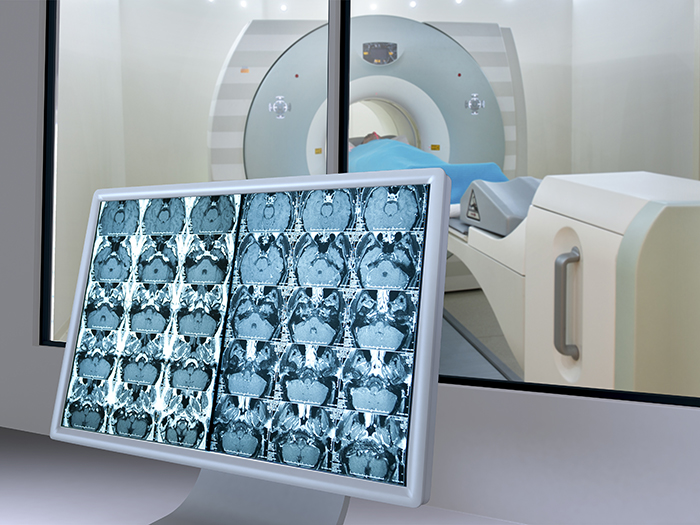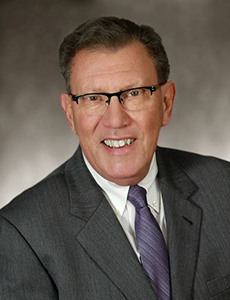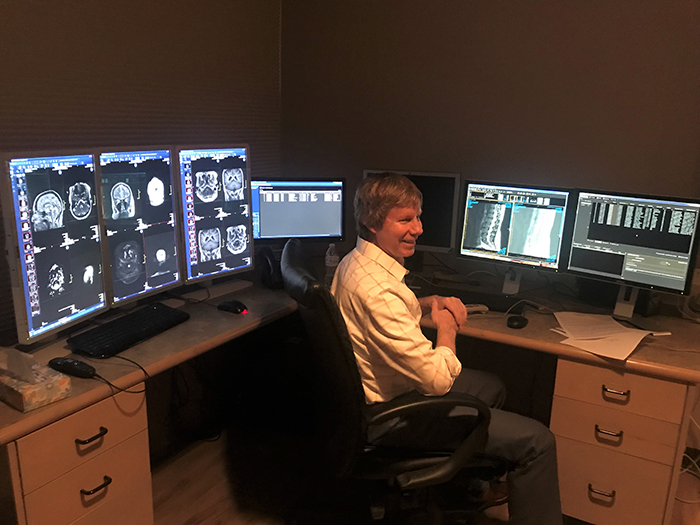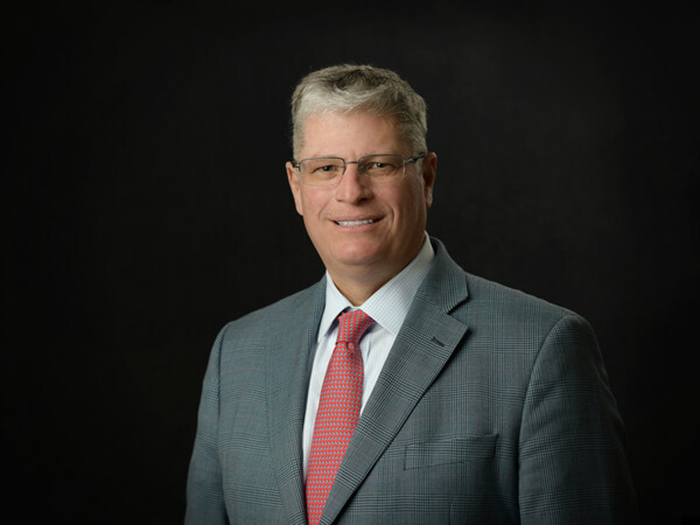Sponsored by Orchid Medical
It’s Gotten a Lot Harder to Manage Workers’ Comp Imaging. These 5 Traits of a Best-in-Class Imaging Provider Are Critical

Few diagnostic tests provide as clear a picture of a soft tissue injury as an MRI. In workers’ compensation, imaging is often the answer for adjusters seeking to determine the severity — or in some cases, the legitimacy — of an injury.
But high-quality imaging centers can be hard to identify.
After Congress passed the Deficit Reduction Act in 2007, Medicare reimbursement for imaging services was slashed. Where imaging centers once received $800 to $1,000 for an MRI scan, they now receive around $300 to $400.
A quality MRI machine easily costs upwards of $2 million, not including a $10,000-per-month service contract. “This is an industry with high fixed costs. Imaging centers are very expensive to operate,” said Steve Ellerman, Vice President of Provider Relations at ancillary services provider Orchid Medical.
In an effort to shave expenses, imaging centers were forced to forgo the purchase of newer, high-strength equipment and delay maintenance and upgrades to older equipment. The quality of the images produced suffered. Many imaging centers went out of business or were acquired by larger hospital systems.
An even bigger problem, perhaps, is that for those lacking in-depth knowledge of radiology, telling the difference between a superior and mediocre MRI report is next to impossible. “Even referring physicians often can’t determine the quality of the report they receive,” said Dr. Rick Hartker, a board-certified neuroradiologist and Medical Director at Orchid Medical.
So how can workers’ comp payers be sure they are getting accurate information, and that the service provided is worth the cost? Ellerman and Hartker laid out five characteristics to look for in a best-in-class imaging center.
1. Accreditation from the American College of Radiology

Steve Ellerman, Vice President of Provider Relations
Imaging centers can carry accreditation from several organizations. The three primary organizations are: the American College of Radiology (ACR), the Intersocietal Accreditation Commission (IAC), and the Joint Commission.
Though Medicare will accept any of the three, “an ACR accreditation is by far the most stringent,” Ellerman said. “It’s the gold standard. If you have ACR accreditation, you’re among the best in the business.”
To receive accreditation for MRI services, centers must meet the ACR’s requirements around equipment reliability, image quality, quality control and assurance protocols, safety, and radiologist qualifications.
“As a national imaging services provider, we keep our finger on the pulse of who has received and kept this accreditation, and give preference to those centers that maintain it,” Ellerman said.
2. A Minimum of 1.5 Tesla MRI
As a measure of magnetic strength, more tesla units mean a clearer image. The highest-quality MRI machines on the market boast a 3 tesla magnet, but availability has been hampered by high cost and declining reimbursement.
“A 3 tesla MRI is state-of-the-art right now,” Hartker said, “but a 1.5 tesla is also a high-field magnet and does an excellent job.”
Low-field magnets below 1.5 tesla are typically insufficient and often produce a lower quality image. At 1 tesla and below, “there’s a huge drop-off,” Hartker said. Older open MRI scanners typically have a strength of only 0.3 tesla, but they may be required in some cases, such as for patients who are claustrophobic or too large to fit into a closed MRI’s very tight quarters.
To gain a top ranking in Orchid Medical’s proprietary provider rating system, imaging centers must have a 1.5 tesla magnet or higher.
3. Board-Certified Staff Radiologists

Rick Hartker, Board-Certified Neuroradiologist and Medical Director
Having at least two radiologists certified by the American Board of Radiology on site enables a quick report turnaround, but it also provides extra sets of eyes that can detect potential fraud.
The trained eye of a radiologist can gauge not only the severity of an injury, but also whether it is pre-existing or related to the accident claimed as its cause.
Orchid Medical requires each provider in its imaging network to be credentialed following guidelines set by the National Committee for Quality Assurance (NCQA). Its internal credentialing and contracting team analyzes the provider’s licensure, board certification, professional liability and insurance coverage, malpractice claims history and fellowship training to determine their qualification and inclusion in the network.
“We understand the imaging world. We know where the good providers are and how to select them,” said Hartker, who has 20-plus years of experience in radiology.
4. Guaranteed Two-Day Turnaround Time
A detailed medical report is the final product of an MRI scan. Claims adjusters and nurse case managers need the report quickly in order to make decisions on the next steps of a claim. Further clinical care cannot be determined without understanding the nature and severity of the injury.
“Adjusters are very busy people. That report is a vital cog in the wheel in terms of setting reserves and determining what type of treatment is warranted. We require our providers get the report back into the hands of the adjuster within 24 to 48 hours. Sometimes the turnaround is same-day,” Ellerman said.
“A center that takes a week to deliver the report is simply unacceptable.”
5. Proximity and Availability
An imaging center’s location and availability also factor into how quickly an injured worker is seen and a report generated.
“If we have an excellent center in our network, but we can’t get the injured worker in for another five days, it doesn’t do anyone any good,” Ellerman said. “Close proximity and availability are necessary for timely appointment scheduling.”
They’re also better for patient care. Delays in testing or long drives necessitated by faraway centers can exacerbate an injury and delay recovery. Orchid Medical utilizes geo-mapping technology that allows the care coordinator to select the imaging center most conveniently located to the injured worker.
Combining Quality and Service
 To ensure their network providers maintain a high standard, Orchid Medical conducts random audits led by Dr. Hartker to assess the technical adequacy of images and their correlation with the radiologist’s report. Orchid Medical also tracks key performance metrics to enforce service level expectations such as billing compliance, schedule accessibility, report timeliness and quality, and feedback from injured workers and payers.
To ensure their network providers maintain a high standard, Orchid Medical conducts random audits led by Dr. Hartker to assess the technical adequacy of images and their correlation with the radiologist’s report. Orchid Medical also tracks key performance metrics to enforce service level expectations such as billing compliance, schedule accessibility, report timeliness and quality, and feedback from injured workers and payers.
These factors feed Orchid Medical’s provider ranking system, an internal methodology which categorizes providers from a low of “1 star” to a high of “5 stars.”
“Network quality is critical,” said Hartker. “Our dedicated provider relations team combined with the company’s mechanisms for monitoring provider performance helps to ensure the integrity of Orchid Medical’s imaging network.”
Despite rapid expansion — Orchid Medical has experienced 84 percent organic growth over the past three years and is one of the fastest-growing providers of ancillary services in the workers’ compensation industry — Ellerman said customer service remains a top priority.
“We’re very hands-on in our approach to client relationships. We don’t employ any phone trees. When you call us, someone will answer the phone, and intake specialists will immediately take your referrals. That helps to provide those fast turnaround times when scheduling your injured workers for diagnostic services,” Ellerman said.
To learn more about Orchid Medical’s diagnostic imaging services and full suite of ancillary medical management solutions, visit https://orchidmedical.com or contact Kellie Jackson, marketing director, at 866.888.6724 or [email protected]
This article was produced by the R&I Brand Studio, a unit of the advertising department of Risk & Insurance, in collaboration with Orchid Medical. The editorial staff of Risk & Insurance had no role in its preparation.










